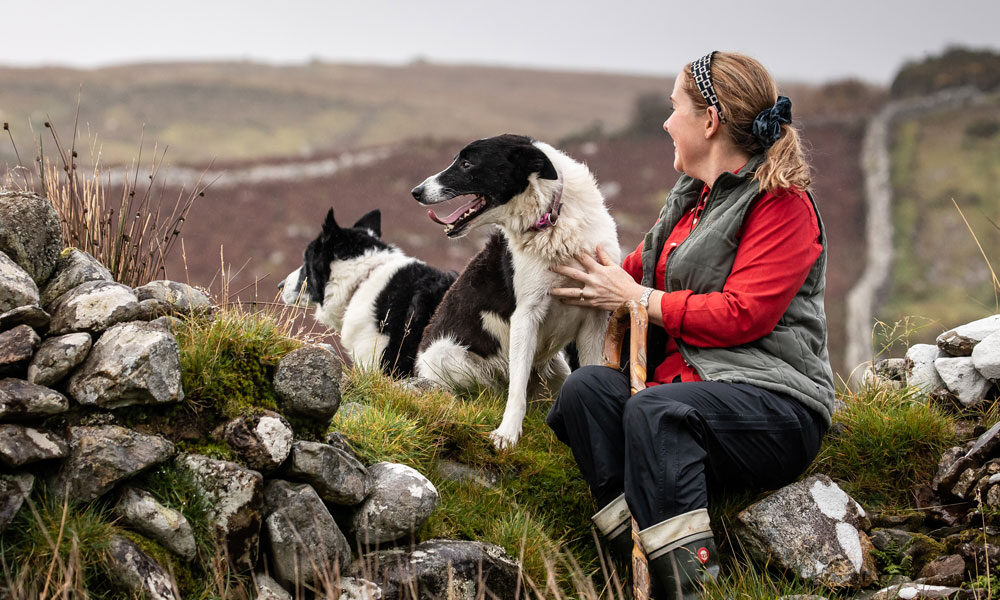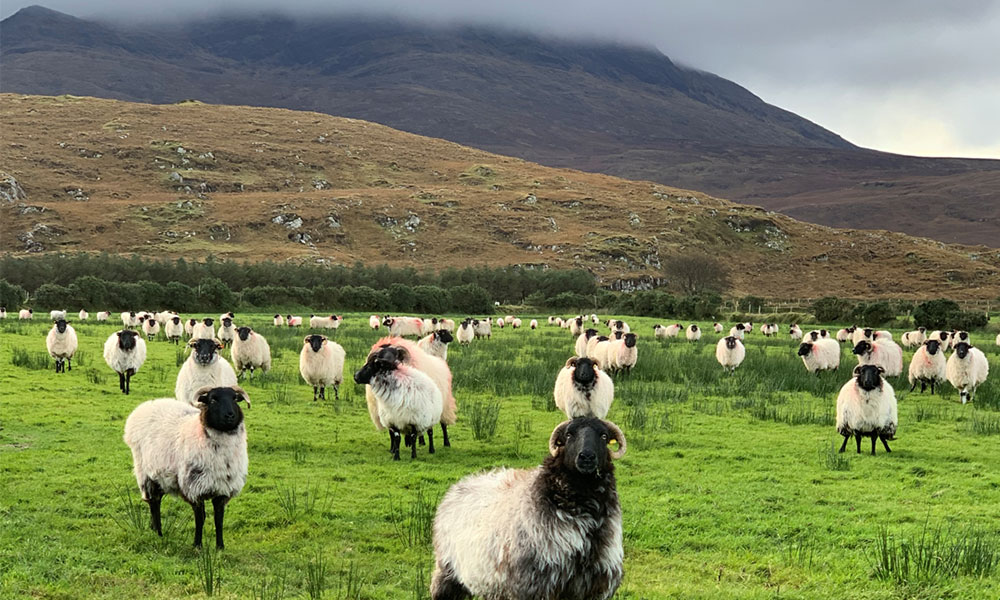- March 08, 2022

The nature of farming means that things happen in a cyclical nature and around October every year the process of gathering the ewes from the mountains begins, a process which takes around 7 days. Once down from the mountains all the animals receive a wellness check, a vitamin dose and a ‘Sheep Dip’ bath! The bath is antiseptic and removes any lice/ticks – this maintains the health of the sheep’s skin.
The flock are then separated into lowland fenced grazing fields. Here the breeding ram is introduced to the stock. The mating groups are of 50 Blackface ewes (ladies) and one Blackface ram (male) and they remain in these groups for 4 weeks at which time the female sheep are repatriated back to the mountains for the winter and the rams remain on the lowland areas.
The gestation cycle for offspring is 5 months, this results in a busy springtime on the farm with lambing season predicted to start around April 15th.
The flock is gathered once again in late March to perform two tasks, a wellness check and a sonogram for all of the ewes. The ewes are given prenatal vitamin dose and returned to the mountains once again. Any ewes carrying twins + remain on the lowlands for feeding and close monitoring. We also keep the ewes, not in lamb, ‘dry stock’, down to begin primary and recurrent dog training.
Lambing is a busy time of year and our Blackface Mountain Sheep lamb is outdoors, we have a ‘ewe maternity’ waiting area where we feed our ewes a mix of 18% protein sheep nuts and a calcium mineral lick bucket, this is to ensure they keep their strength up and provide nourishment for their soon to be born baby lambs. Lambing is our favourite season!
WHAT IS HAPPENING at Glen Keen Farm









